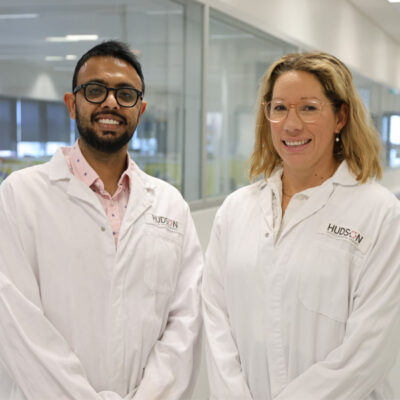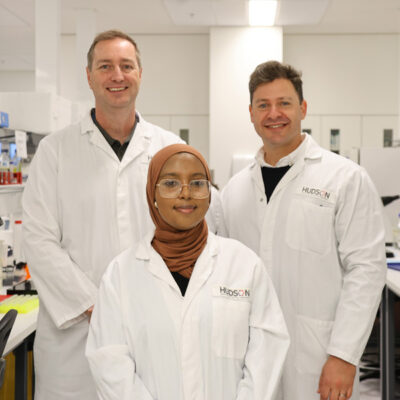Boosting embryo implantation success
By Hudson Institute communications. Reviewed by Dr Shanti Gurung

During infertility treatment, the failure of an embryo implantation in the uterus lining is still a major hurdle to a successful pregnancy for many women.
About infertility
- Infertility affects 10 per cent of couples worldwide (about 49 million reproductive-age couples)
- For 25 per cent of these couples, the cause of infertility remains ‘unexplained’
- Many turn to assisted reproductive technologies, such as IVF
- Around 75 per cent of the embryos transferred during IVF fail to implant and develop.
However, new research by Dr Shanti Gurung and her team led by Professor Lois Salamonsen in the Endometrial Remodelling Research group is contributing to greater knowledge about how to improve the womb environment for successful embryo implantation.
“Recent advancements in embryo culture-systems have improved the quality of embryos. However, the failure of embryo implantation underpins the low success rate of infertility treatment,” Dr Gurung said.
“Therefore, there are still thousands of women who could benefit from further research in this area. Our findings could be used as diagnostic and therapeutic tools to help women achieve healthy pregnancies.”
Dr Gurung said a successful pregnancy requires communication between the endometrium and embryo.
Different types of cells found in the uterine fluid conduct this communication. This study, published in Human Molecular Reproduction found the cells which first come into contact with the embryo played an important role.
“These cells, human endometrial luminal epithelial cells, send survival parcels filled with ‘goodies’ to the incoming embryo to thrive and make the smooth transition to implant in the endometrium,” Dr Gurung said.
Protein-cargoes in exosomes, a type of tiny carrier-vesicle, secreted by these cells were found to significantly enhance embryo growth and development, hatching and implantation. Other proteins secreted into the uterine fluid have selective involvement after embryos implanted.
“Understanding how various components of uterine fluid play in optimal embryo development and implantation, and the establishment of pregnancy will help us to investigate how it is different in women with infertility,” Dr Gurung said.
“This will allow us to target the diagnostic test and treatment strategies. Ultimately this could lift the burden of a couple undergoing artificial reproductive treatment.”
Collaborators | Dr David Greenin, Baker Institute/ La Trobe University, Dr Sally Catt, Education Program in Reproduction and Development, Monash University.
This research was supported by | NHMRC
Journal | Human Molecular Reproduction
Title | Exosomes and soluble secretome from hormone-treated endometrial epithelial cells direct embryo implantation
View publication | https://pubmed.ncbi.nlm.nih.gov/32402079/
In this article
About Hudson Institute
Hudson Institute’ s research programs deliver in three areas of medical need – inflammation, cancer, women’s and newborn health. More
Hudson News
Get the inside view on discoveries and patient stories
“Thank you Hudson Institute researchers. Your work brings such hope to all women with ovarian cancer knowing that potentially women in the future won't have to go through what we have!”





